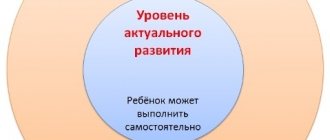Motives
Based on the needs that arise, motives are formed. If a need is a certain tension caused by the need for something, but it does not yet determine the direction of the subject’s activity, then the motive acts as an incentive to action, as a desire to satisfy the need, it is the readiness of the psyche, directing towards a specific goal. Thus, motives specify ways to satisfy emerging needs. Figuratively speaking, the “input” of the motive is the need, and the “output” is the intention and motivation of a person to carry out some action or act of behavior.
How does motivation influence human behavior?
The motivation process includes:
- Assessing life dissatisfaction, identifying needs.
- Formation of goals to satisfy them.
- Developing actions to help achieve the goal.
A powerful psychological phenomenon—motivation—passes through all these stages.
Motivation encourages us to take action and motivates us to act. If we clearly understand what and how we need to do to achieve a goal, motivation occurs in an easy and inspired form. However, if our goals are not supported by a positive feeling, we need to include a motivating stimulus in the motivation process. For example, the desired item or actions of other people, as well as promises made, inevitable circumstances, etc.
Functions of motives
- Incentive - reflects the energy of the motive, is associated with the emergence of a need state, which causes the mobilization of energy, and is manifested in the fact that the motive determines a person’s activity and behavior;
- Directing – reflects the direction of the motive energy towards a specific object, which determines the choice of behavioral strategies;
- Regulating (controlling) – the motive predetermines the nature of behavior, which depends on which motives turn out to be the most significant at any given moment in time; this function includes organizing, controlling, structuring, and meaning-forming functions;
- Stimulating – is associated with the continuation of motivation and the implementation of intentions: the energy mobilized when a state of need arises does not disappear until the need is satisfied.
Basic Myths About Motivation That May Confuse You
You can motivate yourself only with money. There is some truth in this, but we must remember that money follows a goal. Instead of putting money first, think about why you need it. Having answered this question for yourself, you will understand that your goal is not the number of banknotes, but what you can buy with them: expensive clothes, travel, modern technology.
You don't have to have a high IQ to motivate yourself and achieve success. Scientists say that a high IQ does not guarantee great achievements. You may be very smart, but without proper motivation and discipline, you will not achieve the results you need.
Fear is a good motivator. In the short term, fear can actually be the driving force to start doing something. The threat of punishment, dismissal or a fine will help you get started with the desired task. However, constantly expecting fear and failure can undermine your mental health. So try to use positive reinforcement.
It all depends on innate abilities. Columbia University psychology professor Carol Dweck in her book “The Flexible Mind” argues that focusing on innate talents kills motivation, the author calls this a fixed mindset. Focus on the effort you put into the things you want to do. Based solely on developing your willpower, discipline and perseverance. This position will give the greatest effect in motivation, since it eliminates the belief that everything is predetermined and there is no point in trying to move forward.
Characteristics of motives
- The stability of a motive is the duration of its preservation over time. The stability of the motive depends, on the one hand, on the stability (inertia) of the need, on the other hand, on the stability (rigidity) of the characteristics of a person’s personality, such as attitudes, worldviews, values, inclinations, interests.
- The strength of a motive is the intensity of a person’s motivation to act. The strength of the motive depends, on the one hand, on physiological factors (the strength of the tension of the need on the basis of which this motive is formed), on the other hand, on psychological factors. It is now also known that the strength of a motive is greater when the motivation is internally organized than when the motivation is externally organized.
Needs and motives, their classification
Need is an urgent need for a person to receive material or psychological benefits. By material wealth we mean an object (food, wealth, car, housing). Psychological benefits are emotions, feelings, recognition.
There are several classifications of needs: • according to A.N. Leontiev; • according to Murray; • according to A. Maslow.
A.N. Leontyev identified the following types of needs: • individual-species (characteristic of one specific individual or an entire species); • homeostatic-exogenous (characterized by the absence or presence of external effects on the body); • positive-negative (moving forward towards the intended goal or avoiding performing any actions); • functional-subject; • primary (hereditary) – secondary (acquired in the process of life and socialization); • physiological-mental (according to elimination mechanisms).
Murray's classification is slightly different . In it, all needs are divided based on the mechanism of human interaction with the external environment around him. There are motivational primary and psychogenic (secondary) needs, positive and negative, explicit and latent (hidden).
Classification according to A. Maslow has a clear hierarchy, including 7 levels of needs:
- in self-actualization (self-improvement, recognition, disclosure of potential);
- in harmony (aesthetic perception of the world);
- in self-knowledge (continuous learning and study of oneself as an individual, education);
- in self-respect (respect as a person);
- in belonging to society (acceptance in the team and society, communication, relationships, love);
- safe (home, absence of attacks on life and health);
- in satisfying physiological needs (food).
Types of motives
The motives of different people and the different motives of the same person differ from each other not only in dynamic characteristics (strength and stability), but also in the type of needs that manifest themselves in them, the forms they take, breadth or narrowness, specific content of activity, in which they are implemented. Complex types of activity, as a rule, respond not to one, but to several simultaneously operating and interacting motives, forming an extensive system of motivation for human actions and actions. Motives can be conscious or unconscious. Based on the above, various classifications of motives have been created.
In all the diversity of motives, a special place is occupied by social motives that determine the selectivity of human behavior in society. According to the classification of social motives by G. Murray , social motives include the affiliation motive, the achievement motive, the aggression motive, the power motive and the altruism motive.
- The affiliation motive is a conscious need for close and trusting relationships with people or one person. The affiliation motive can manifest itself in two forms: fear of rejection and desire for acceptance.
- The achievement motive is a person’s desire to achieve high results in the activity performed. This motive is expressed in the form of a desire to achieve or in the form of a fear of failure.
- The motive of aggression is an internal urge to cause any harm to another person.
- The motive of power is the desire to dominate and subjugate other people to one’s will despite resistance on their part.
- The motive of altruism appears as a conscious need to provide selfless help to other people and care about them.
How to increase motivation if you don't want to do anything
Think about what motivated you to change. It happens that you need to do things that you don’t want to do at all. In this case, ask yourself: why do you need to do this, remember the reason for which you need to overcome yourself.
Five minute rule. If you just can’t bring yourself to work for at least half an hour, devote just 5 minutes to this activity. Just start moving. As a rule, it is the hardest thing for us to start, but in the process we accept and continue to do the right thing with pleasure.
Fill yourself with energy. Think about what can make you cheerful right now, what will charge you with strength and positivity. Create a ritual for yourself before an important task, and then over time your brain will wait to complete the task.
Divide the task into simple and specific steps. This method will help overcome procrastination and trick our brains from fear of taking on such a huge task.
Think about what is stopping you from working. Maybe you're tired or want a snack. Find and eliminate the cause of fatigue and burnout. If necessary, take a weekend off.
Analyze your fears. This seems absurd. But in fact, our brain is designed in such a way that it tries to protect us from perceived dangers. And maybe a career and an athletic body don’t seem like something scary to you, but for the subconscious, such changes in life seem dangerous, since they require drastic changes, daily training and mental activity.
Find yourself a like-minded person, a mentor. It's always easier to do great things with someone who has similar interests and goals. You can motivate each other and prevent depression. In addition, when we see another person doing something that will lead him to his goal, we unconsciously do not want to lag behind and do the same
Start your day right. Plan everything in the evening. Make it a habit to start your day with your most challenging task. In the book "Get Out of Your Comfort Zone" this principle is presented as "eat the frog."
Read books and watch motivational films. And even if this is an external external motivation, you will still be inspired, which means you are determined to conquer new heights
Create the right environment. Set up your workplace in a comfortable environment. Prepare your sports uniform in the evening. Create an environment where you cannot put off an important task.
Record your progress. Don't forget to consider all your past successes and opportunities. Write them down and remember them. This will help you track how effectively you are moving forward. In addition, this method will not give you the opportunity to belittle your achievements. If you see how much you've done, it won't be difficult to motivate yourself to go further.
Reward yourself. Always make time and opportunities to celebrate your successes. If you complete the desired task or step that brings you closer to your goal, reward yourself. This could be a trip to a cafe, a necessary purchase, or a trip to your favorite place. However, remember that rewards should not prevent you from achieving your goal and roll back your efforts. That is, if you have lost 1 kg, you do not need to reward yourself with cake.
How to become millionaires from scratch
The concept of motivation in psychology
In modern science, the concept of motivation is considered in two main aspects:
- Motivation as a mental property is the entire set of factors that determine, organize and direct human behavior (a system of needs, motives, goals, intentions, ideals, beliefs, etc.).
- Motivation as a process is a process of stimulation and determination, inducing human behavior and maintaining behavioral activity at a certain level at any given moment in time.
What is incentive
Stimulation is the influence on people from the outside in order to intensify the actions required of them. Typically, the purpose of such an event is to increase the speed and quality of staff work, change the behavior of employees to increase the efficiency of the company.
You may also be interested: School, lyceum, gymnasium - what are they and the differences
Incentives can be material or intangible.
Material support measures include the following tools:
- Salary;
- Awards;
- Various additional payments, allowances and compensations;
- Training at the expense of the company;
- Various types of benefits;
- Providing housing;
- Availability of additional vacation days, etc.
Non-material incentives also include a variety of ways to influence employee behavior:
- Career growth;
- High status and prestige of the position;
- Possibility of self-realization;
- Participation in interesting projects;
- Participation in seminars and professional competitions, etc.
An important point: stimulation can be not only positive, but also negative. Negative measures include, for example, fines for being late or late delivery of work.
Types of motivation
There are several different classifications of types of motivation. The most common classification in the literature is that the following types of motivation are distinguished:
- Intrinsic (internally organized, dispositional) motivation is motivation determined by internal reasons: the psychological properties of the subject, his needs, attitudes, interests, drives, etc.
- Extrinsic (externally organized, situational) - motivation caused by reasons external to the subject: living conditions, circumstances of the current situation.
In its “pure” form, motivation is rarely purely intense or extrinsic. As a rule, human behavior is determined by a combination of external and internal reasons, closely intertwined.
According to another classification, a distinction is made between positive and negative motivation of human behavior: an important feature of human motivation is its bimodal, positive-negative structure. These two modalities of impulses (in the form of striving for something and avoidance, in the form of satisfaction and suffering, in the form of two forms of influence on the personality - reward and punishment) are manifested in drives and directly realized needs - on the one hand, and in necessity - on the one hand. another.
The motivation of an activity determines its effectiveness: the most effective activity is one that is conditioned by internal and positive motivation.
What is motivation and how does it differ from motive?
Let’s take a closer look at what is behind such a word as “motivation” and why, thanks to it, we can achieve almost any goal. Motivation is a system of internal and external motives that force a person to act in a certain way.
Motivation is directly related to our interests and needs, so it is individual in nature. It would seem that a sea voyage will bring a lot of joy to one person, while another will not have the motivation to earn a ticket, because he has no desire to swim in the sea. Therefore, saving for such a trip will most likely not bring results. The key concept of motivation is motive. This is the object towards which human activity is aimed.
That is, it is a certain human need, a certain reason for actions and decisions. However, motive is different from needs and goals because it is directed toward something that may not be directly conscious. For example, chocolate or cake will become a reason not to start a diet. And a new phone will become a motive not to accumulate and invest money, because the need for immediate satisfaction of desire in the form of a new phone is much more pleasant than the interest from investing in the long term, although we want to live on passive income.
Trade capital bot real reviews
Motive is the reason, goal is the result. The goal is 20% per annum from the investment portfolio, the motive is to travel and not deny yourself anything. To better understand your motivation and understand its root cause, answer the following questions:
- What makes me do something I don't want to?
- What needs and desires do I have?
- What do I expect from my goal, what results do I want to get?
- Is the end goal really meaningful to me and am I willing to sacrifice anything for it?
Basic rules for proper incentives
In order for incentives to have a significant effect, the following rules must be adhered to:
- Increasing incentives should be done gradually;
- Incentives, both negative and positive, must be sufficiently felt by employees (for example, a fine for being late in the amount of 10 rubles for a salary of 60,000 rubles is unlikely to have any effect);
- The greatest effectiveness can be achieved by skillfully combining incentives of a material and non-material nature;
- Incentives must be timely: that is, there should not be a large time gap between a certain action of an employee and the application of appropriate support measures to him;
- Impressive results can be achieved if the incentive coincides with the internal motivational coordinates of employees.











